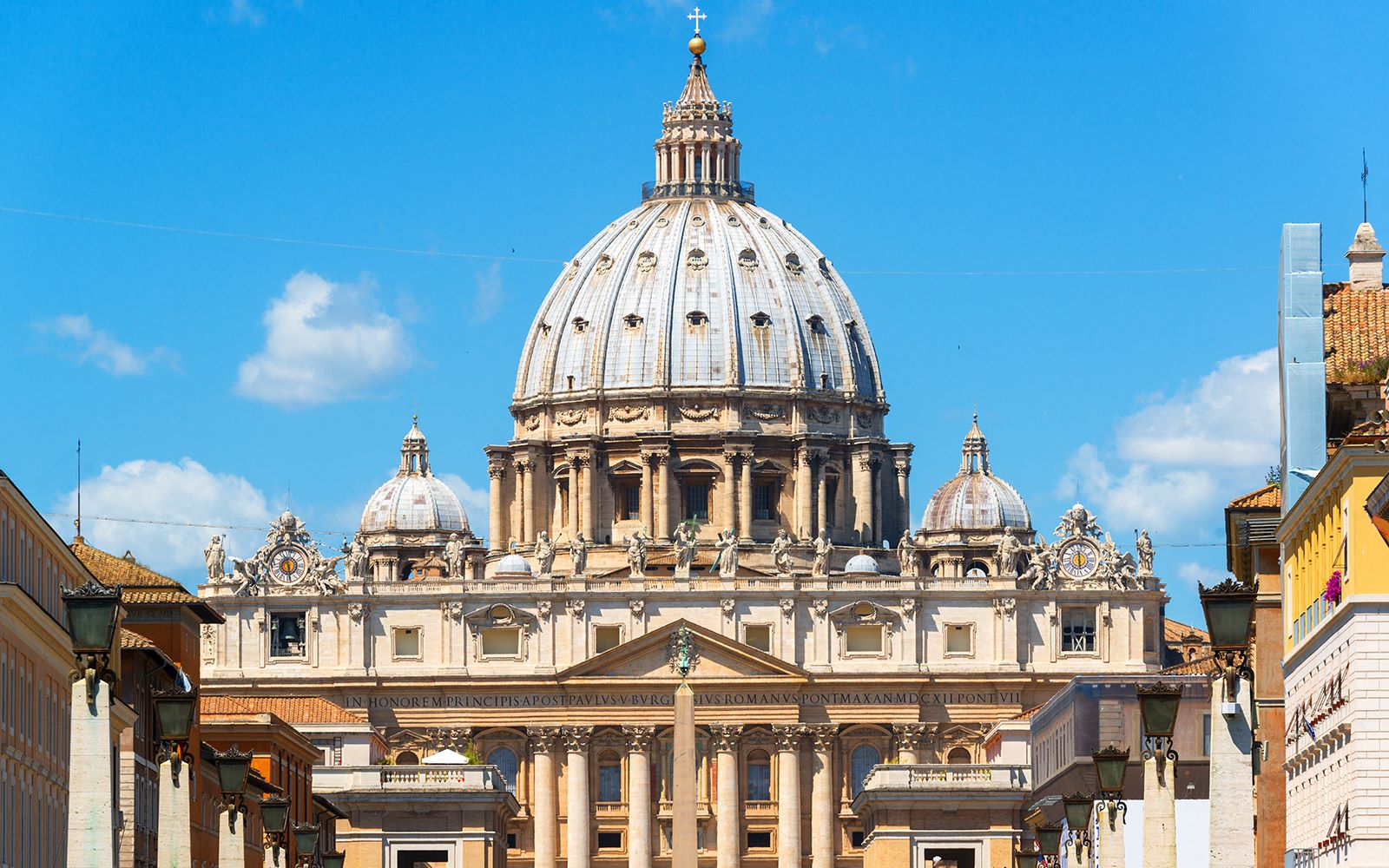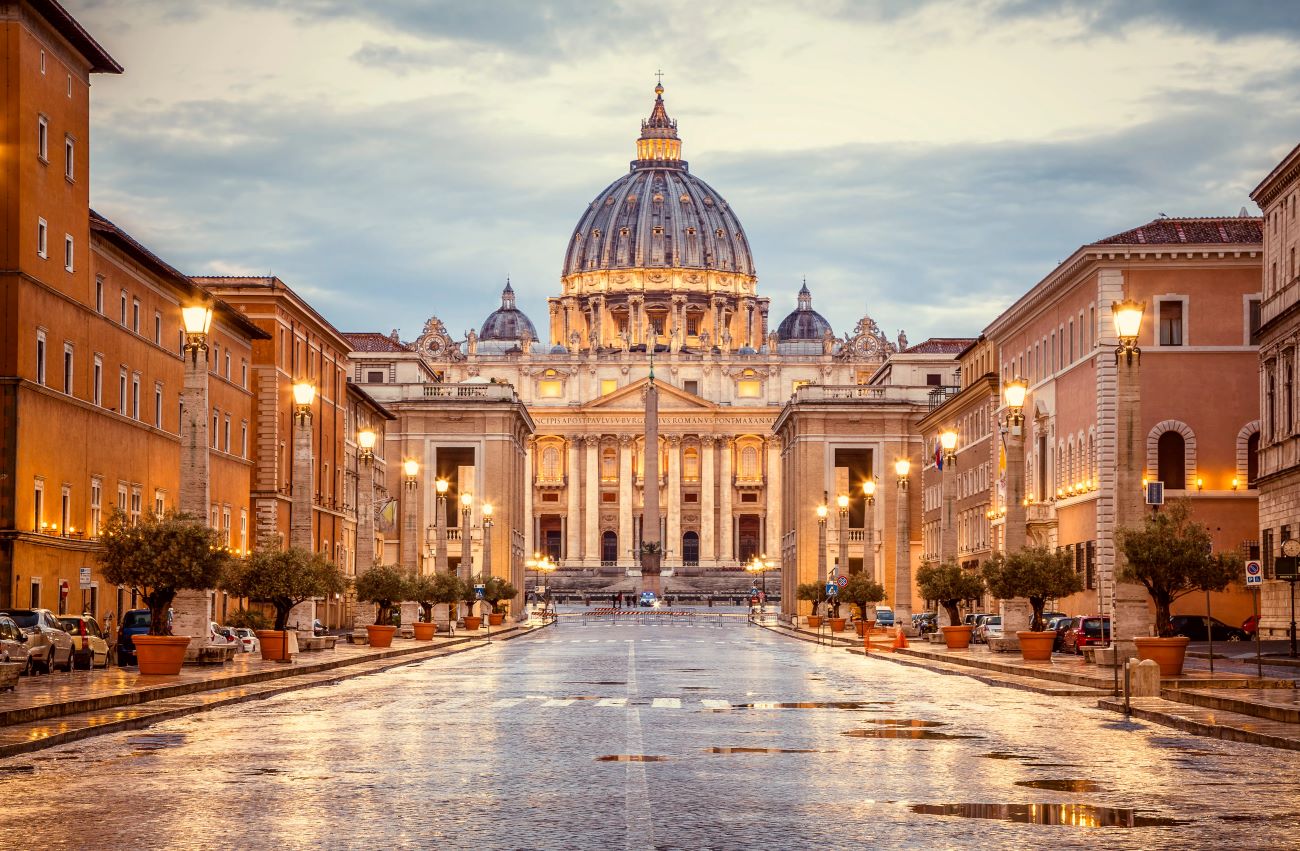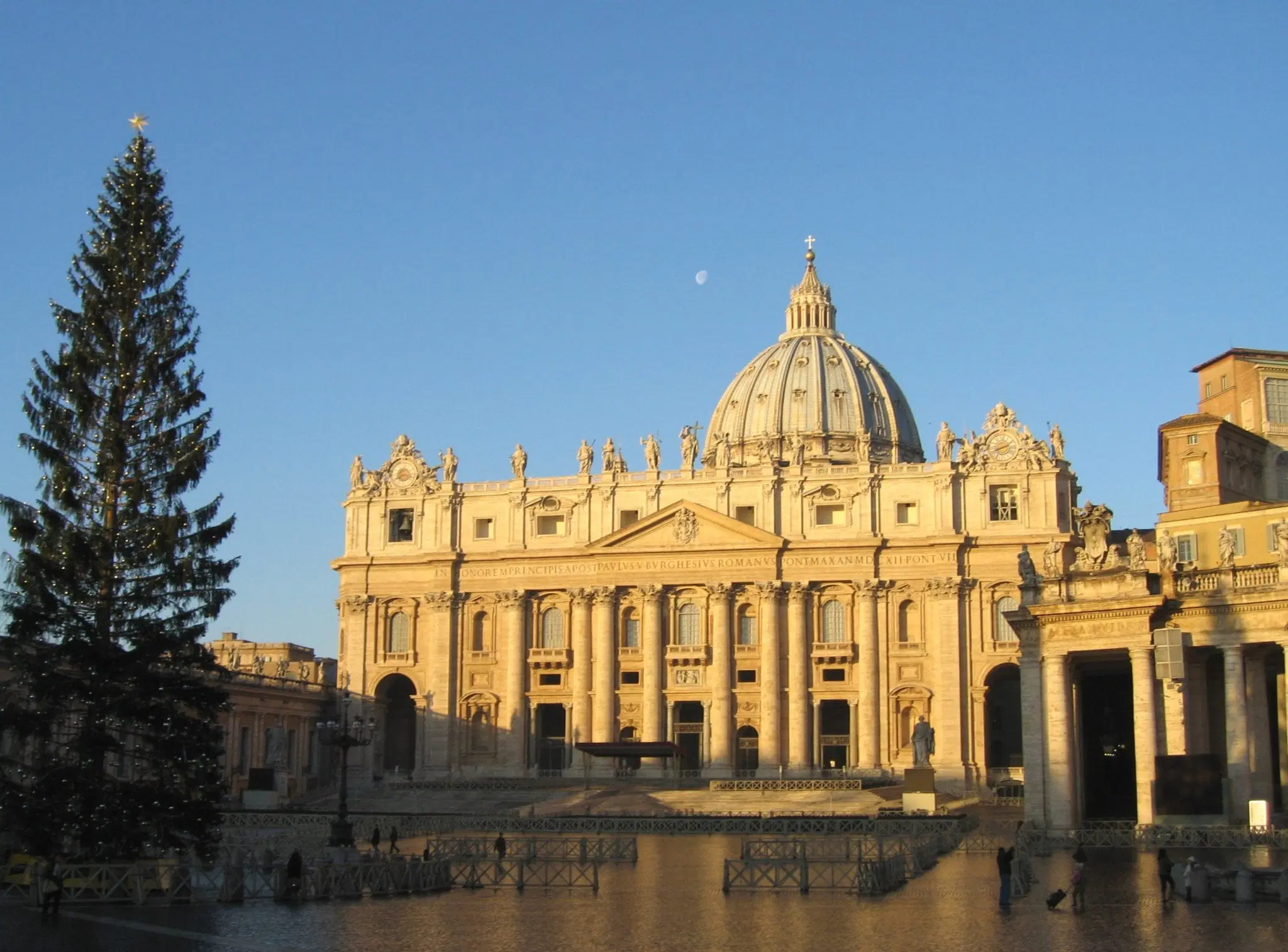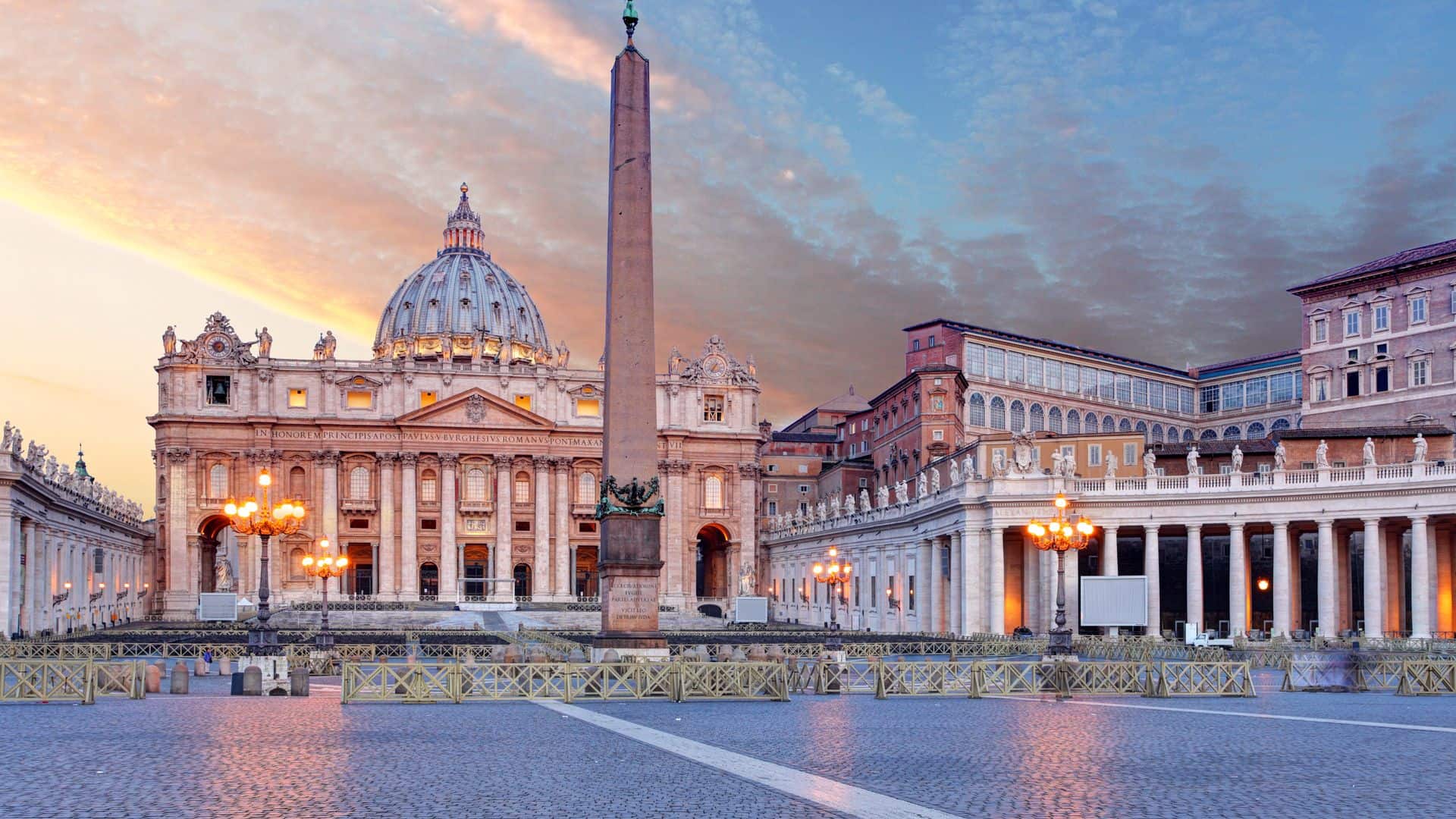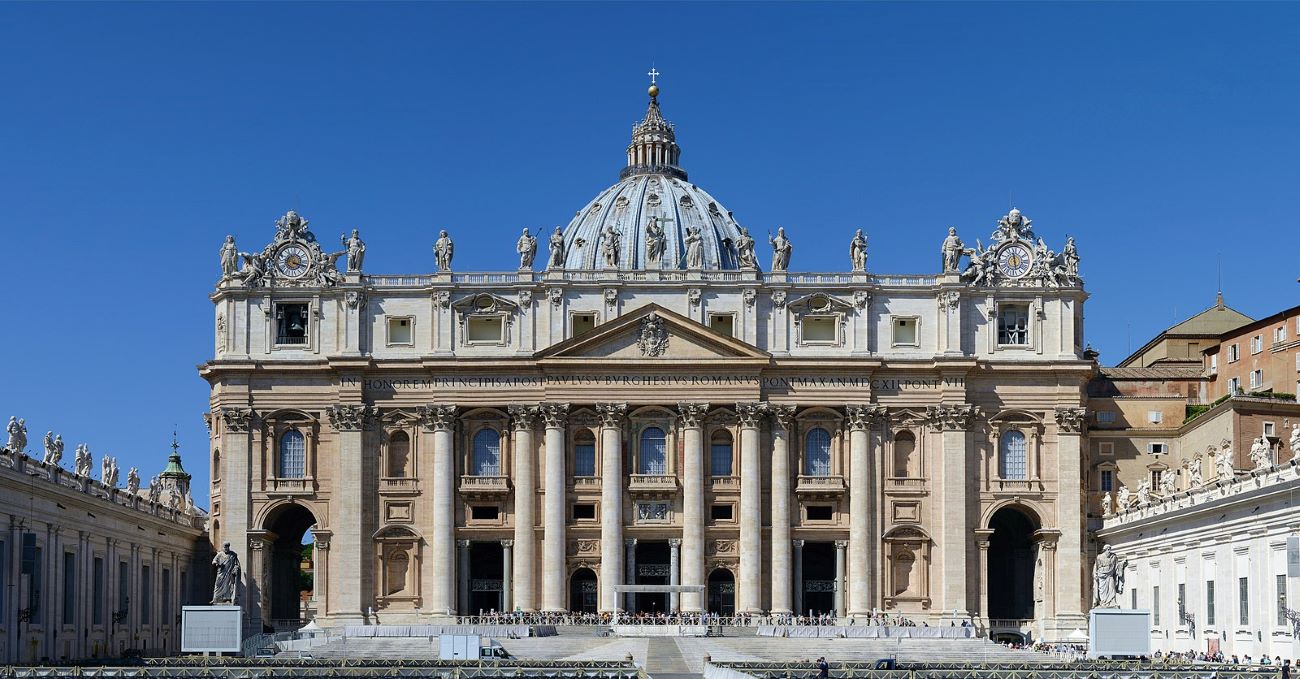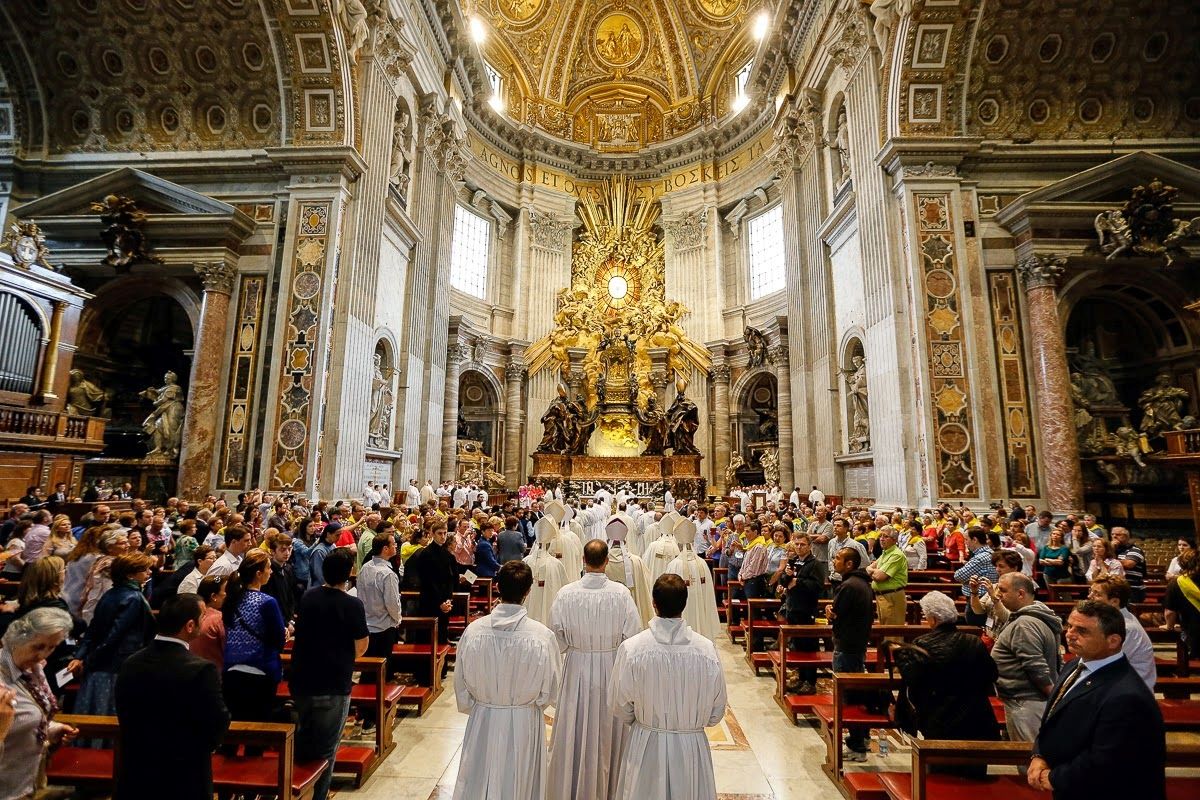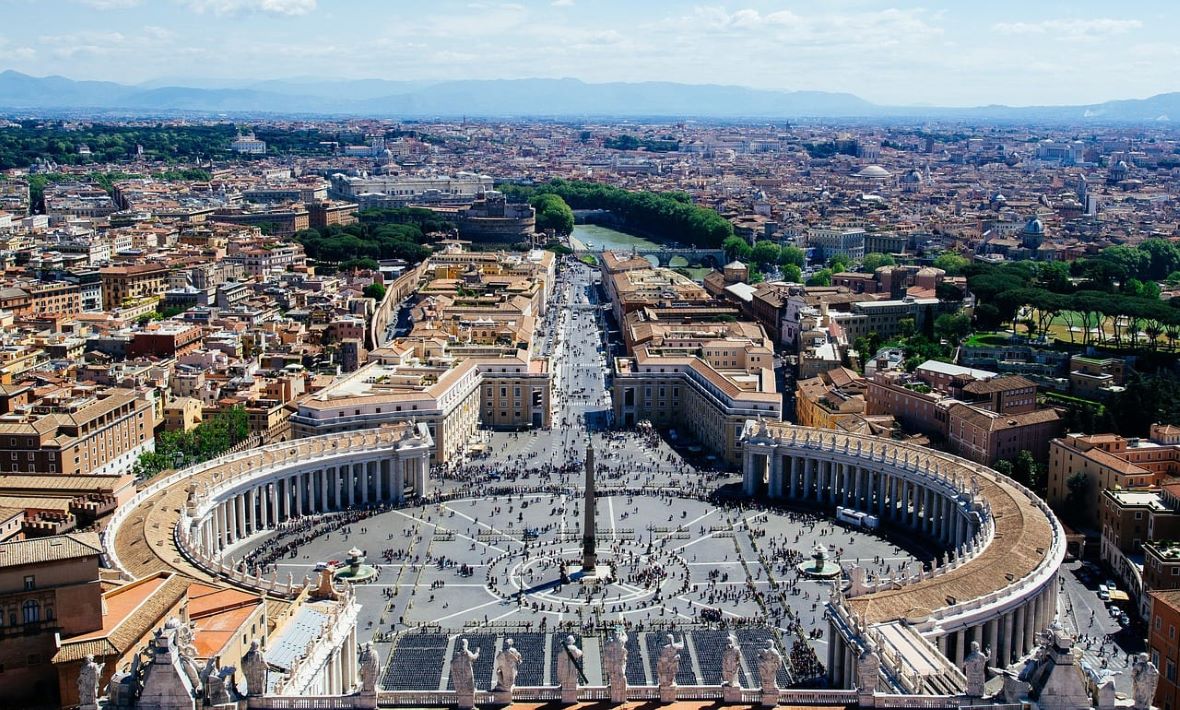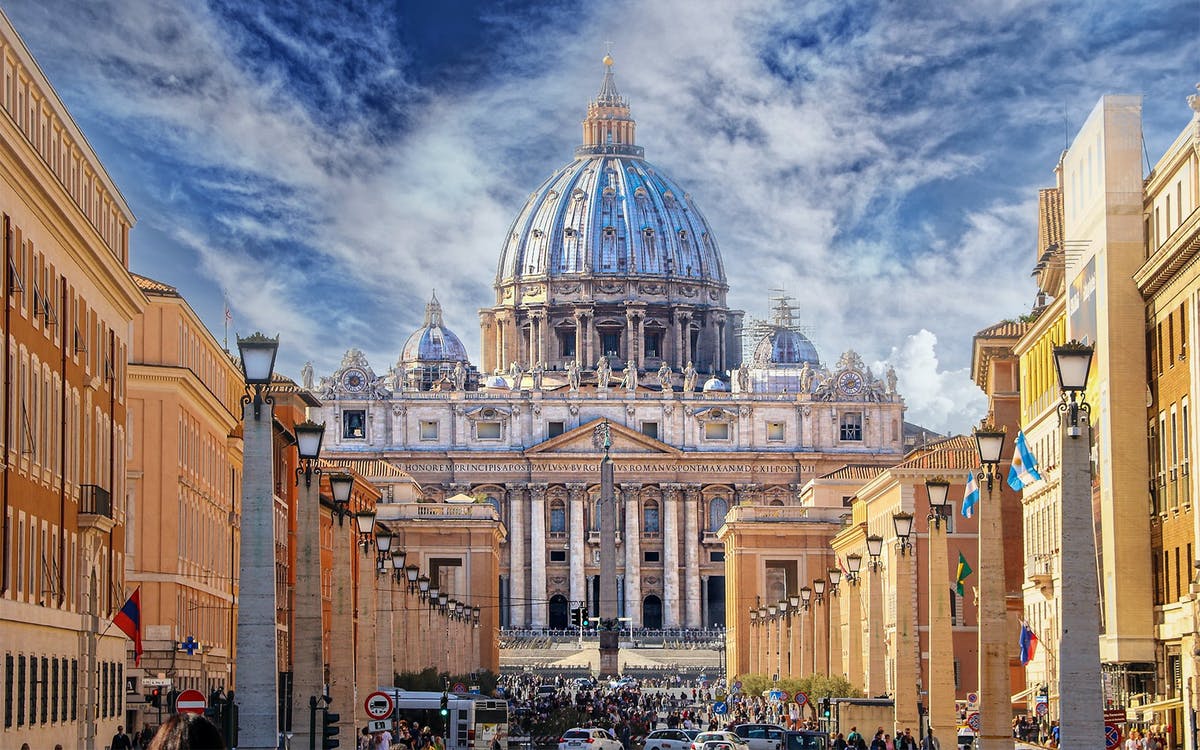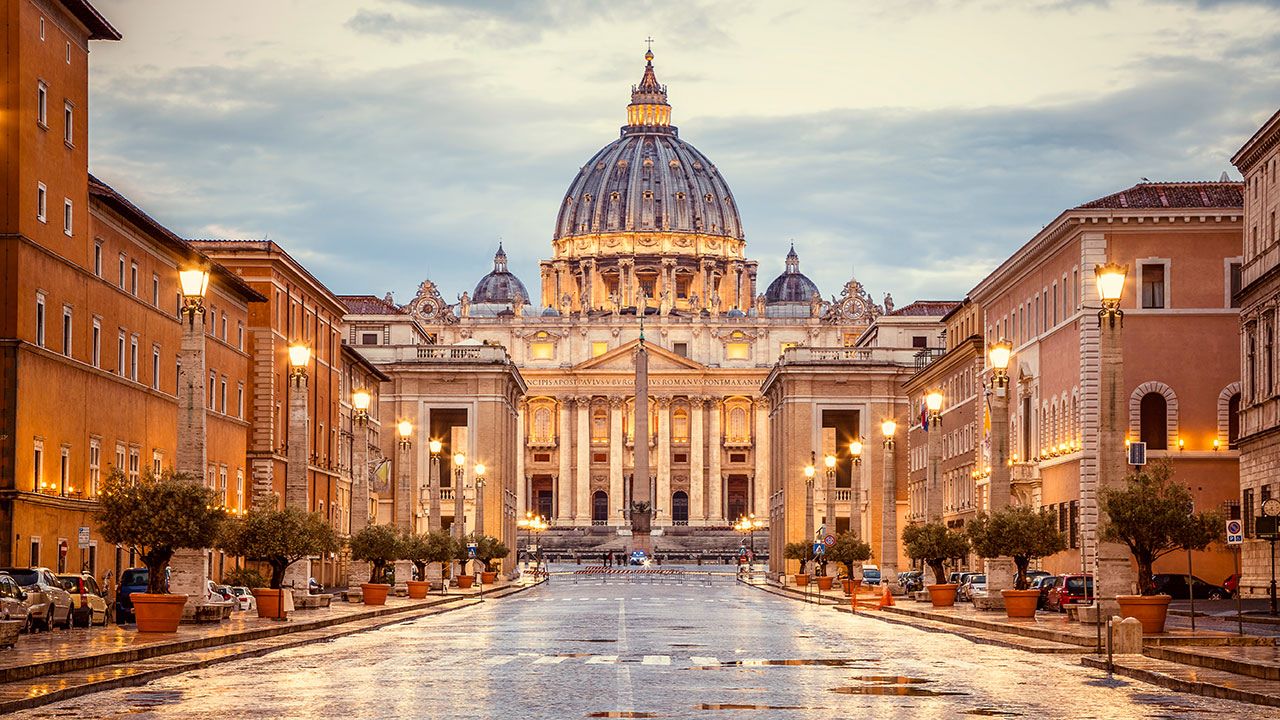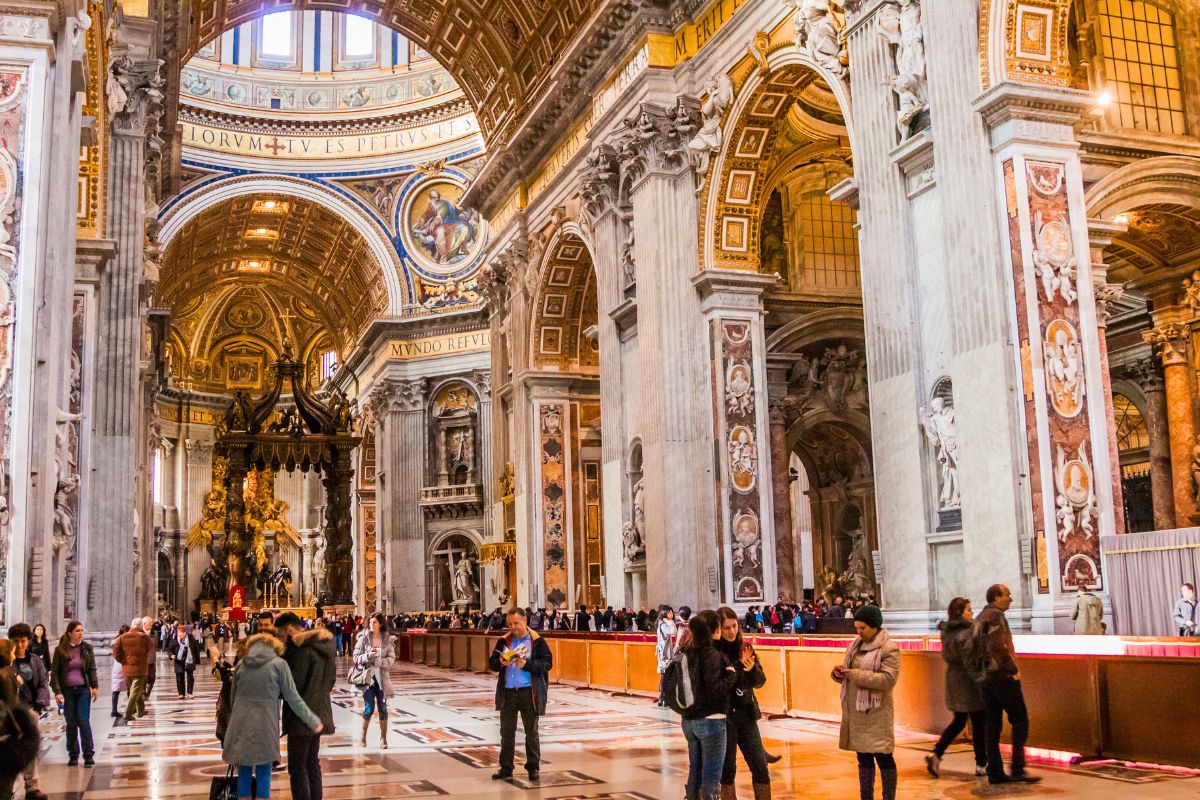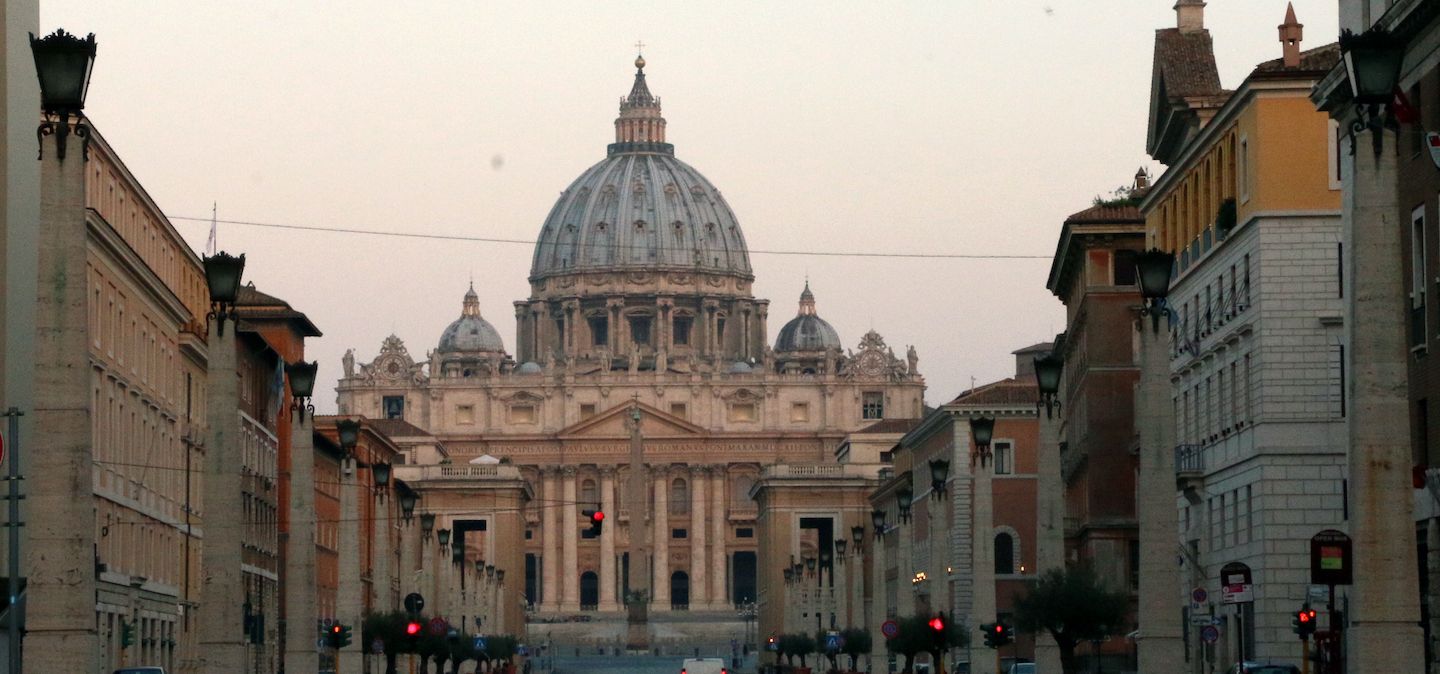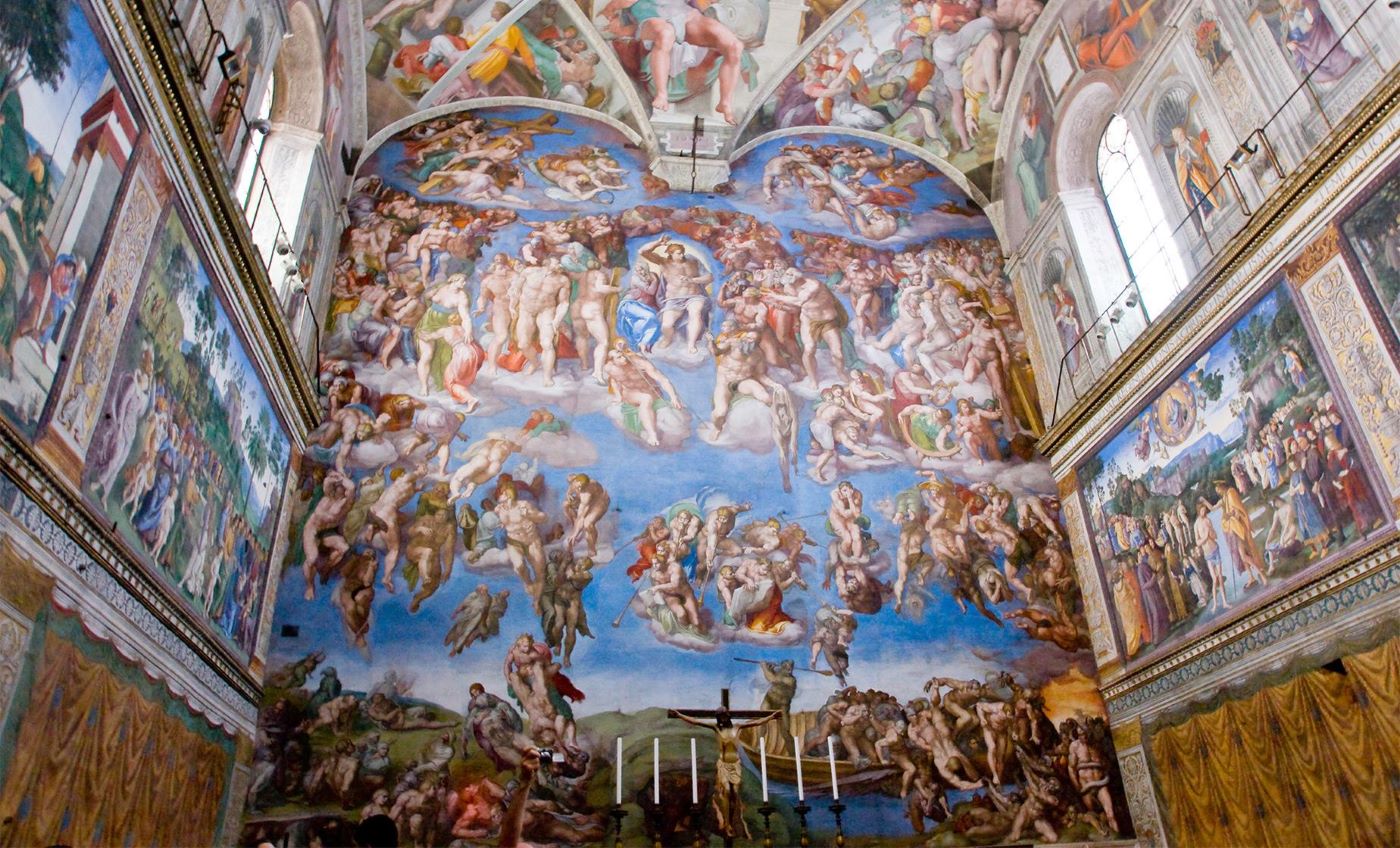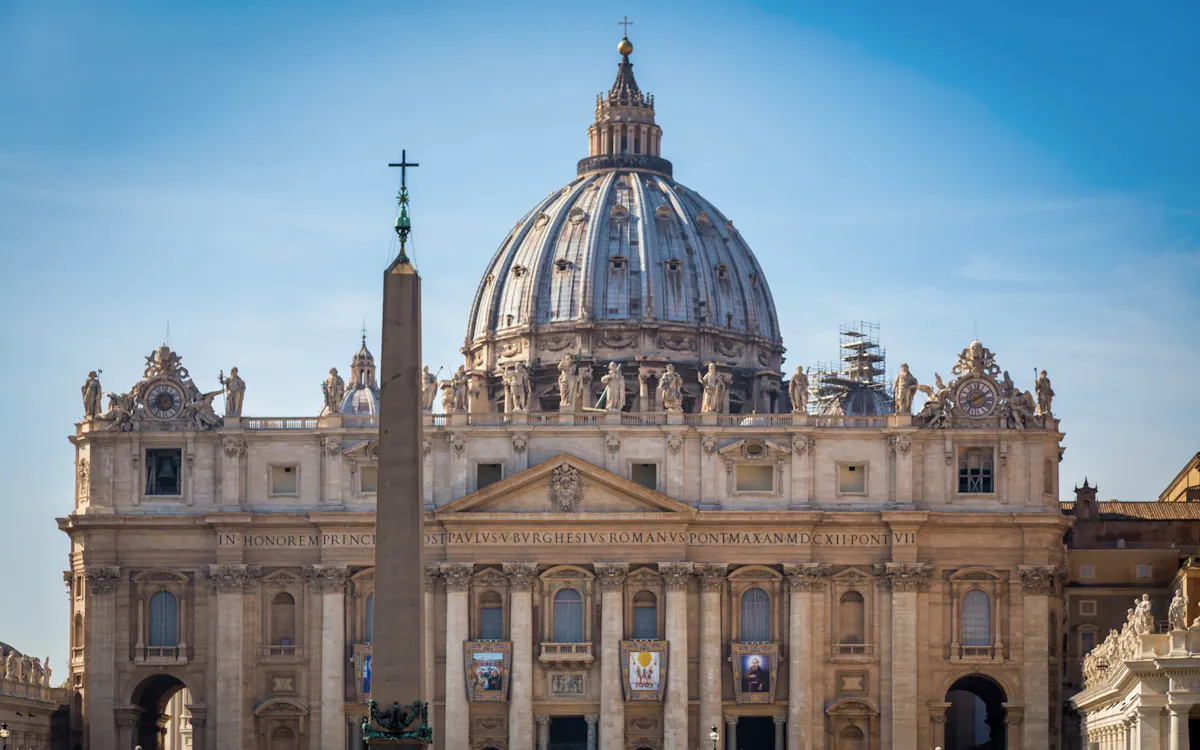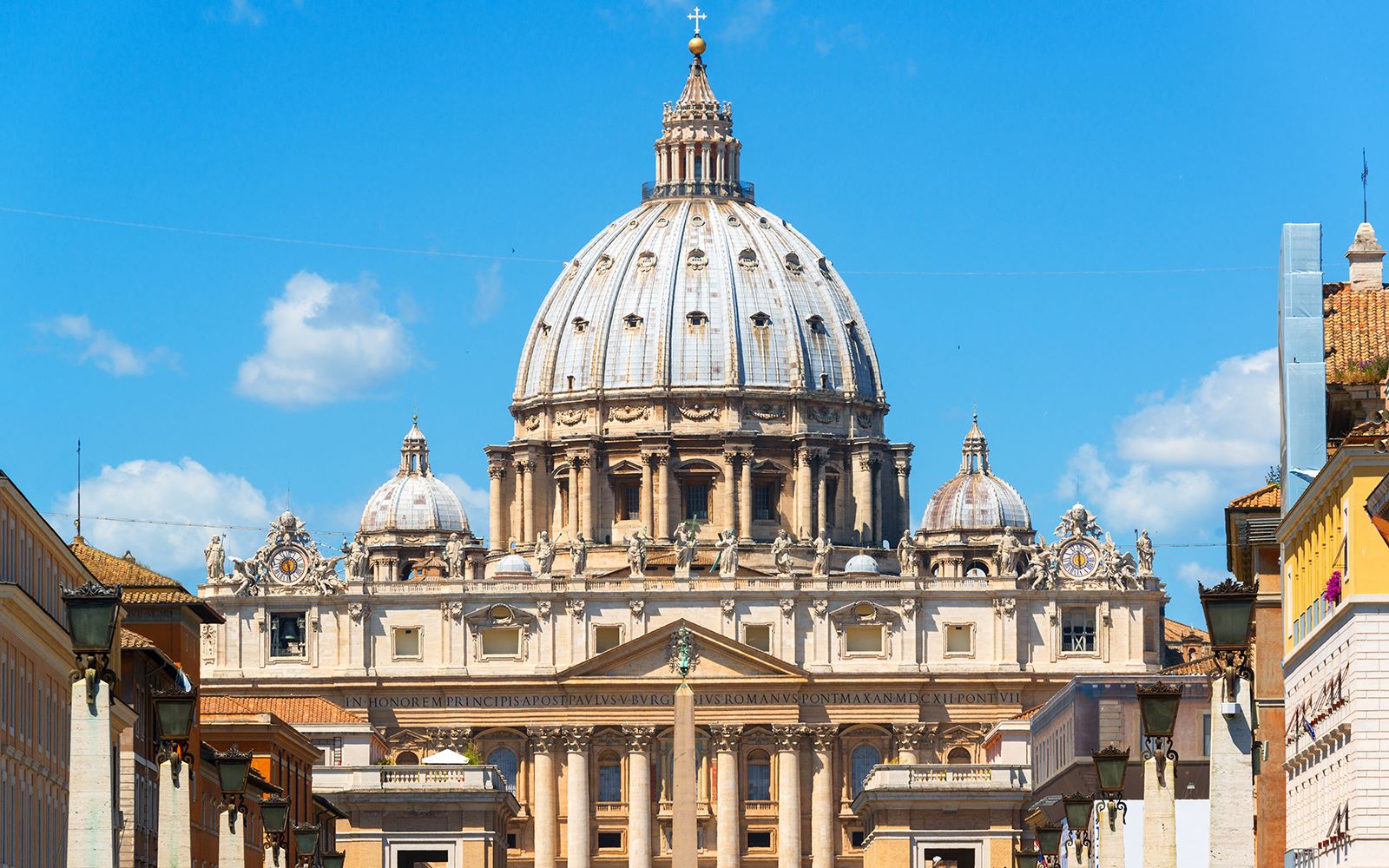Home>Arts and Culture>How Many Steps Are There To The Top Of St. Peter’s Basilica
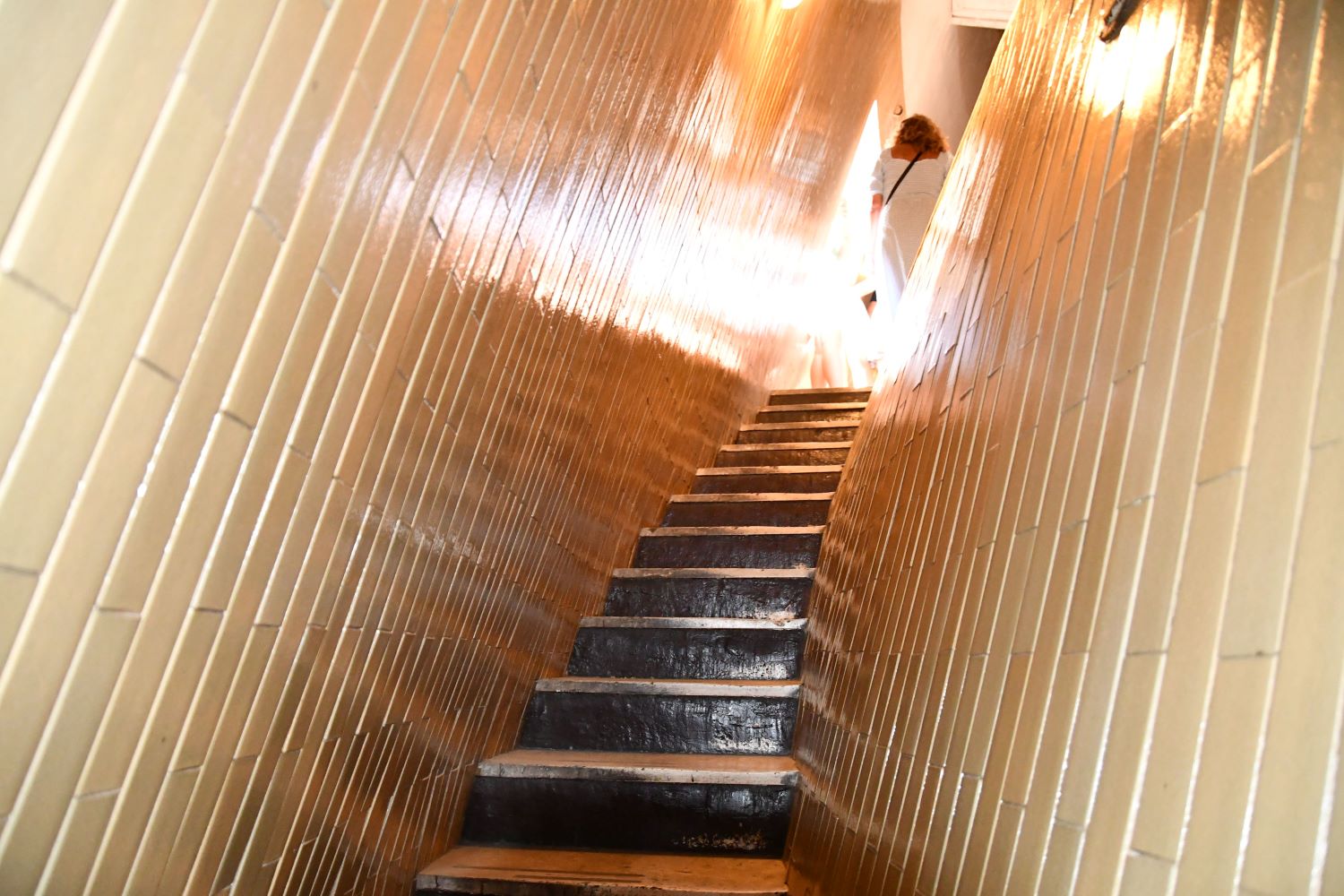

Arts and Culture
How Many Steps Are There To The Top Of St. Peter’s Basilica
Published: February 10, 2024
Jason DeRose, Managing Editor at Christian.net, uses his expertise in religion and journalism to deepen understanding of faith's societal impacts. His editorial leadership, coupled with a strong academic background, enriches the platform’s diverse content, earning him recognition in both journalism and religious circles.
Discover the breathtaking journey to the top of St. Peter's Basilica and learn how many steps it takes. Explore the arts and culture of this iconic landmark.
(Many of the links in this article redirect to a specific reviewed product. Your purchase of these products through affiliate links helps to generate commission for Christian.net, at no extra cost. Learn more)
Table of Contents
Introduction
St. Peter's Basilica, an architectural masterpiece nestled in the heart of Vatican City, is a symbol of grandeur, spirituality, and human ingenuity. This iconic structure, designed by renowned architects including Michelangelo and Gian Lorenzo Bernini, stands as a testament to the enduring legacy of the Catholic Church and the artistic prowess of the Renaissance era.
As one approaches the basilica, the sheer magnitude of its domed roof and the intricate details adorning its façade are awe-inspiring. The basilica's significance extends beyond its physical presence, as it serves as a focal point for religious pilgrimages, art enthusiasts, and history aficionados from around the globe.
The journey to the top of St. Peter's Basilica is a testament to the enduring allure of this architectural marvel. Visitors are beckoned to embark on a vertical odyssey, ascending the spiraling staircase or the elevator to reach the summit. The experience promises not only a breathtaking panorama of Vatican City and Rome but also a profound connection to the historical and spiritual essence of this sacred site.
As we delve into the history, construction, and ascent to the summit of St. Peter's Basilica, we unravel the layers of art, faith, and human endeavor that converge within this monumental edifice. Join us on this exploration as we uncover the secrets, stories, and sheer magnificence of one of the world's most revered architectural wonders.
Read more: How Many Altars Are In St. Peter’s Basilica
History of St. Peter's Basilica
The history of St. Peter's Basilica is a tapestry woven with threads of religious significance, artistic brilliance, and historical intrigue. The origins of this monumental structure can be traced back to the 4th century when the first basilica was commissioned by Emperor Constantine. Built over the burial site of Saint Peter, one of the twelve apostles of Jesus, the original basilica stood as a testament to the growing influence of Christianity in the Roman Empire.
Over the centuries, the basilica underwent several transformations and renovations, reflecting the evolving styles of architecture and the shifting tides of power in Rome. However, it was during the Renaissance period that St. Peter's Basilica assumed its current form of unparalleled grandeur. The likes of Bramante, Michelangelo, and Bernini contributed their visionary talents to shape the basilica into a crowning achievement of Baroque and Renaissance artistry.
The construction of the present-day basilica was a monumental undertaking, spanning over 120 years and involving the expertise of some of the most illustrious architects and artists of the time. The grandeur of St. Peter's Basilica not only served as a testament to the spiritual authority of the Catholic Church but also as a symbol of the artistic and architectural prowess of the Renaissance era.
The history of St. Peter's Basilica is intertwined with pivotal moments in the history of the Catholic Church and the city of Rome. From the coronation of popes to the majestic ceremonies that have unfolded within its hallowed halls, the basilica has borne witness to centuries of religious and cultural significance.
Today, St. Peter's Basilica stands as a living testament to the enduring legacy of faith, art, and human endeavor. Its history is a testament to the enduring legacy of faith, art, and human endeavor, inviting visitors to immerse themselves in the rich tapestry of its past while marveling at the timeless beauty that continues to captivate the world.
Construction of St. Peter's Basilica
The construction of St. Peter's Basilica stands as a testament to human ambition, artistic innovation, and unwavering faith. The genesis of this monumental endeavor can be traced back to the 16th century when Pope Julius II envisioned a grand basilica that would surpass its predecessor in magnificence and spiritual significance.
The task of bringing this vision to life fell into the hands of some of the most esteemed architects and artists of the Renaissance era. Donato Bramante, a visionary architect, laid the groundwork for the basilica's design, drawing inspiration from the grandeur of ancient Roman architecture. His initial plans set the stage for a structure that would embody the ideals of Renaissance art and architecture, characterized by harmonious proportions and classical elements.
Following Bramante's tenure, the mantle of overseeing the basilica's construction passed into the hands of Michelangelo, whose indelible mark on the basilica's design is evident in the iconic dome that graces the Roman skyline. Michelangelo's architectural prowess and artistic vision elevated the basilica to new heights, both literally and figuratively, as he sought to create a structure that would inspire awe and reverence for generations to come.
The completion of St. Peter's Basilica was a collaborative effort that spanned over a century, involving the expertise of celebrated architects such as Carlo Maderno and Gian Lorenzo Bernini. The basilica's façade, with its imposing colonnades and intricate detailing, reflects the culmination of their collective genius, culminating in a structure that embodies the pinnacle of Baroque architecture.
The construction of St. Peter's Basilica was not without its challenges, from logistical hurdles to the complexities of engineering a dome of such monumental proportions. Yet, each obstacle was met with unwavering determination and ingenuity, resulting in a structure that defied the limitations of its time and continues to stand as a testament to human achievement.
Today, St. Peter's Basilica stands as a living testament to the enduring legacy of faith, art, and human endeavor. Its construction represents a triumph of human creativity and perseverance, inviting visitors to marvel at the architectural splendor that embodies the spirit of the Renaissance and the enduring legacy of the Catholic Church.
Number of Steps to the Top
Embarking on the ascent to the summit of St. Peter's Basilica entails a physical and spiritual journey that culminates in a breathtaking panorama of Vatican City and the sprawling city of Rome. The number of steps to reach this lofty vantage point varies depending on the chosen route, each offering its own unique blend of historical immersion and physical exertion.
For those who opt to ascend the basilica via the spiraling staircase, a total of 551 steps awaits. This ancient passageway, imbued with the echoes of countless pilgrims and visitors who have tread its worn stones, offers a visceral connection to the historical legacy of the basilica. As one ascends, the subtle interplay of light and shadow casts an ethereal glow upon the spiraling path, heightening the sense of anticipation and reverence.
Alternatively, visitors can choose to ascend via an elevator that transports them partway up the basilica, reducing the number of steps to a more manageable 320. This modern convenience provides a respite for weary legs while preserving the awe-inspiring experience of ascending to the summit.
The journey upward is punctuated by moments of reflection and wonder, as the architectural marvel of the basilica gradually unfolds. The intricate details of the interior, from the ornate mosaics to the graceful curvature of the dome, serve as a testament to the artistic and spiritual significance of this sacred site.
As visitors near the summit, a palpable sense of anticipation builds, culminating in the emergence onto the rooftop terrace. Here, the reward for the arduous ascent awaits in the form of a panoramic vista that stretches as far as the eye can see. The sprawling expanse of Vatican City, with its iconic landmarks and lush gardens, unfolds below, while the city of Rome sprawls beyond, its ancient monuments and bustling streets a testament to the enduring legacy of human civilization.
The number of steps to the top of St. Peter's Basilica serves as a physical and metaphorical bridge, connecting visitors to the historical, artistic, and spiritual dimensions of this architectural marvel. It is a journey that transcends mere physical exertion, offering a profound encounter with the timeless allure of one of the world's most revered cultural treasures.
Experience of Climbing to the Top
Embarking on the ascent to the summit of St. Peter's Basilica is a transformative experience that transcends the physical act of climbing. It is a journey that unfolds in layers, each step revealing a tapestry of history, art, and spirituality that intertwines with the physical exertion of the ascent.
As visitors begin their ascent, the spiraling staircase or the elevator serves as a threshold, ushering them into a realm where time seems to converge. The worn steps of the staircase bear the imprint of countless pilgrims and visitors who have embarked on this timeless odyssey, infusing the ascent with a palpable sense of continuity and reverence. Each step becomes a testament to the enduring legacy of St. Peter's Basilica, a structure that has withstood the passage of centuries and borne witness to pivotal moments in history.
The ascent unfolds amidst a symphony of architectural marvels, as the intricate details of the basilica gradually come into view. The play of light and shadow, the ornate mosaics, and the graceful curvature of the dome serve as a testament to the artistic and spiritual significance of this sacred site. As visitors ascend, they are enveloped in a sense of awe and wonder, their journey punctuated by moments of reflection and revelation.
The physical exertion of the ascent becomes a metaphor for the spiritual and emotional journey that unfolds with each step. The rhythmic cadence of the climb becomes a meditation, a contemplative rhythm that mirrors the ascent towards enlightenment and transcendence. Each step becomes a metaphorical bridge, connecting visitors to the historical, artistic, and spiritual dimensions of this architectural marvel.
As visitors near the summit, a sense of anticipation builds, culminating in the emergence onto the rooftop terrace. Here, the reward for the arduous ascent awaits in the form of a panoramic vista that stretches as far as the eye can see. The sprawling expanse of Vatican City, with its iconic landmarks and lush gardens, unfolds below, while the city of Rome sprawls beyond, its ancient monuments and bustling streets a testament to the enduring legacy of human civilization.
The experience of climbing to the top of St. Peter's Basilica is a journey of the body, mind, and spirit. It is a pilgrimage that transcends the physical act of ascending, offering a profound encounter with the timeless allure of one of the world's most revered cultural treasures.
Read more: How Big Is The St. Peter’s Basilica
Views from the Top
As visitors emerge onto the rooftop terrace of St. Peter's Basilica, they are greeted by a breathtaking panorama that unfolds in every direction. The sprawling expanse of Vatican City lies below, its iconic landmarks and lush gardens creating a verdant oasis amidst the urban landscape. The dome of the basilica, with its graceful curves and majestic presence, offers a vantage point unlike any other, allowing visitors to behold the heart of the Catholic Church from a lofty perch.
The view from the top of St. Peter's Basilica is a testament to the enduring allure of Rome, a city steeped in history and crowned with architectural marvels. The ancient grandeur of the Colosseum stands as a silent sentinel, bearing witness to the glories of the past, while the majestic sweep of the Tiber River winds its way through the urban tapestry, reflecting the timeless beauty of the Eternal City.
As visitors gaze outwards, the city of Rome unfolds in all its splendor, its ancient monuments and bustling streets a testament to the enduring legacy of human civilization. The dome of St. Peter's Basilica offers a unique vantage point from which to behold the city's iconic landmarks, from the majestic Pantheon to the regal sweep of Piazza Navona, each a testament to the artistic and cultural richness of Rome.
The panoramic vista from the top of St. Peter's Basilica extends beyond the city limits, offering a sweeping view of the surrounding countryside. The undulating hills of Lazio stretch into the distance, their verdant slopes a testament to the natural beauty that envelops the Eternal City. In the distance, the Apennine Mountains form a majestic backdrop, their rugged peaks a reminder of the timeless grandeur of the Italian landscape.
The views from the top of St. Peter's Basilica transcend mere sightseeing, offering a profound encounter with the historical, cultural, and natural tapestry that defines Rome and its environs. It is a vista that invites contemplation and reflection, a testament to the enduring allure of one of the world's most revered cultural treasures.
Conclusion
In conclusion, the ascent to the top of St. Peter's Basilica is far more than a physical journey; it is a transformative odyssey that intertwines history, art, and spirituality. From the ancient footsteps that echo through the spiraling staircase to the modern convenience of the elevator, each step toward the summit is imbued with a profound sense of continuity and reverence. The architectural marvels that unfold along the ascent serve as a testament to the enduring legacy of the basilica, a structure that has withstood the passage of centuries and borne witness to pivotal moments in history.
The panoramic vista from the summit offers a breathtaking tableau that stretches from the heart of Vatican City to the sprawling expanse of Rome and beyond. It is a vantage point that transcends mere sightseeing, inviting visitors to behold the timeless allure of the Eternal City from a lofty perch. The views from the top of St. Peter's Basilica offer a profound encounter with the historical, cultural, and natural tapestry that defines Rome and its environs.
The journey to the top of St. Peter's Basilica is a pilgrimage of the body, mind, and spirit, a testament to the enduring allure of one of the world's most revered cultural treasures. It is an experience that transcends the physical act of ascending, offering a profound encounter with the timeless beauty and historical significance that continue to captivate visitors from around the globe.
As visitors descend from the summit, they carry with them not only the memories of a breathtaking panorama but also a profound connection to the historical and spiritual essence of St. Peter's Basilica. The ascent to the top of this architectural marvel is a testament to the enduring legacy of faith, art, and human endeavor, inviting visitors to immerse themselves in the rich tapestry of its past while marveling at the timeless beauty that continues to captivate the world.
In the end, the journey to the top of St. Peter's Basilica is a testament to the enduring allure of this architectural marvel, inviting visitors to embark on a vertical odyssey that culminates in a profound encounter with the historical, cultural, and spiritual dimensions of one of the world's most revered cultural treasures.
